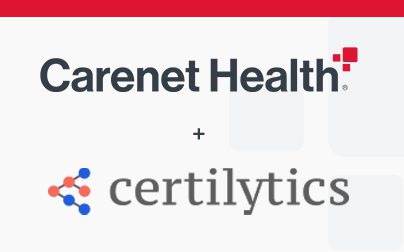Mention the word colonoscopy, and most people shudder.
Such a strong aversion to colorectal cancer screening, including the dreaded prep, can have significant implications on clinical outcomes.
Educating healthcare consumers on the benefits of colonoscopies, the screening process, and the risks of procedure avoidance can help increase their engagement in this critical preventive care measure.
Beyond engagement, however, it’s often necessary to apply persuasion and influence strategies that motivate people to take the desired actions (e.g., scheduling the screening, following test preparation directions), especially when barriers like fear are halting them in their tracks.
“While engagement is a necessity, there is a need to explore how tools such as influence and persuasion fit into the model to achieve activation whereby a person implements a behavior change or action to achieve a health goal,” says Jennie Echols, PhD, MSN, RN, Director of Clinical Solution Development, Carenet Healthcare Services and author of the new white paper Beyond Engagement: Strategies for Persuasion and Influence.
Social Validation: Looking to Others
One persuasion technique that payers and providers can apply to activate healthcare consumers is social validation. Basically, social validation (or consensus) means looking to others to decide what is correct behavior.
According to persuasion expert Robert Cialdini, PhD, “One fundamental way that we decide what to do in a situation is to look to what others are doing or have done there. If many individuals have decided in favor of a particular idea, we are more likely to follow, because we perceive the idea to be more correct, more valid.”1
In the book Yes! 50 Scientifically Proven Ways to Be Persuasive, Cialdini and his co-authors point to one of the many research experiments that demonstrate the power of social proof to influence other people’s actions.
“…an assistant of the researchers stopped on a busy New York City sidewalk and gazed skyward for sixty seconds. Most passersby simply walked around the man without even glancing to see what he was looking at. However, when the researchers added four other men to that group of sky gazers, the number of passersby who joined them more than quadrupled.”2
Using Social Proof to Drive Activation
To persuade healthcare consumers who are reluctant to get a colonoscopy (or mammogram, immunization, pap test, etc.), health plans and providers can invite them to “Join countless others who overcame their fear and felt tremendous relief and pride after completing the screening.”
This strategy is even more powerful when accompanied by positive testimonials, especially when they are given by people who are just like your members or patients—people from similar backgrounds who share similar barriers, whether it’s test misconceptions, being asymptomatic, cultural beliefs, or fear of discomfort or a diagnosis.
These stories can be shared in numerous ways, for example, during one-on-one interactions or by video embedded in targeted email messages.
“Social validation can give healthcare consumers the inspiration, motivation, confidence and reassurance they need to follow through with recommended health measures,” says Echols. “Health plans and providers can further ensure adherence by helping with care access and coordination, including assisting with locating a screening facility and appointment scheduling.”
Learn More: New White Paper
Incorporating persuasion principles into engagement strategies helps healthcare consumers, providers and payers alike achieve their goals. To learn more, download the white paper Beyond Engagement: Strategies for Persuasion and Influence.
1) Cialdini, R. B. (2001). The Science of Persuasion. Scientific American, 284(2), 78.
2) Cialdini, R. B., Goldstein, N.J., & Martin, S. J. (2008). Yes! 50 Scientifically Proven Ways to Be Persuasive. New York, NY: Free Press.



